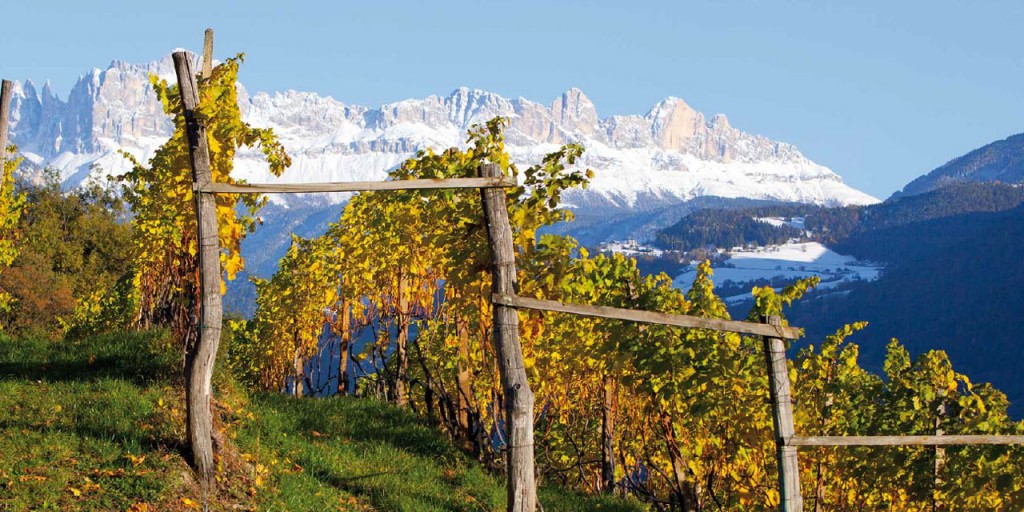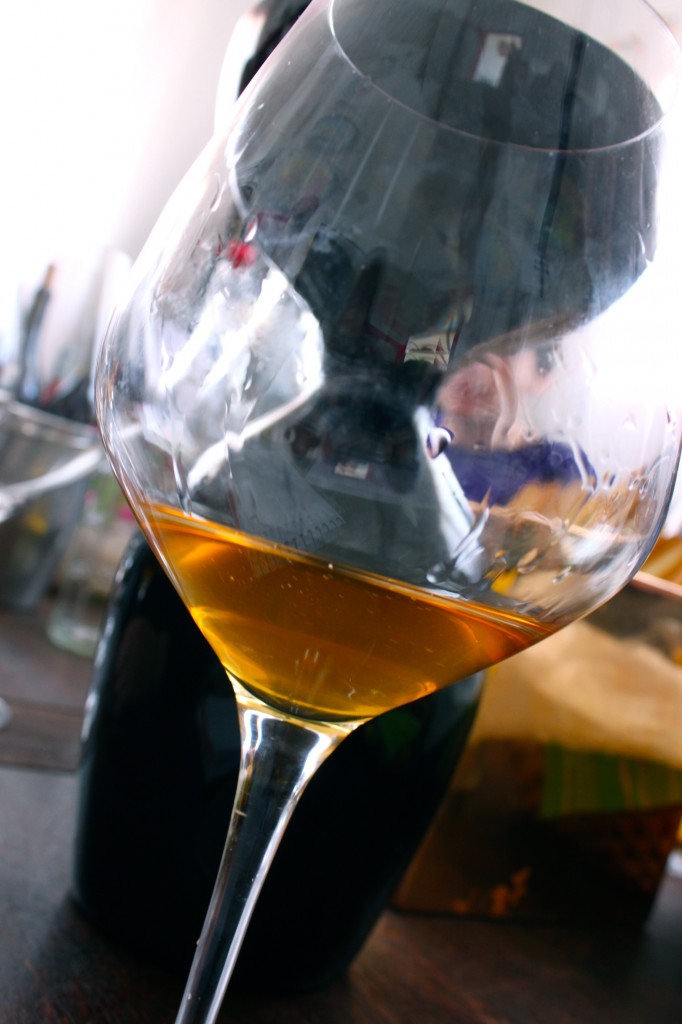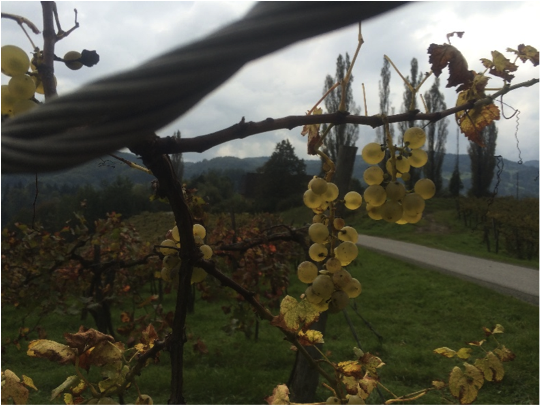View previous glossary entries, from the A’s through to T’s HERE!
Here is a lexicon of definitions of key wine words. The definitions are not intended to be scientifically objective and, in many cases, will be somewhat simplistic. Some will describe the technical side of wine(s), others will examine the more abstract and aesthetic ideas behind wine.

Ullage. The word derives originally from the Latin word oculus, “eye”, which was used in a figurative sense by the Romans for the bung hole of a barrel. This became oeil in Medieval French, from which we have the verb ouiller meaning to fill a barrel up to the bung hole and, by analogy, ouillage which was the immediate source of the word’s modern form, at first in the sense of the amount of liquid needed to fill a barrel up to the bung hole. By an obvious extension, ullage came to refer to any amount by which a barrel is unfilled, perhaps because some of the contents have been used. It is also applied to the unfilled air space (head space) at the top of a bottle of wine, which in this case is essential to allow for expansion of the contents as the temperature changes. Ouiller and ouillage are still used to mean to top up the contents of the vessel, especially barrels where by means of evaporation the level reduces and exposes the wine to oxygen. In the Jura region, a producer will decide whether to top up or allow the wine to evaporate and concentrate under a veil (voile) of yeast. Ullage also refers to the space between the bottom of the cork and the surface of the wine in the bottle. The older the wine, the greater the ullage, the greater the risk of oxidised or maderised flavours.
Umami. Eastern food cultures have been referencing the idea of umami for centuries and an early western reference can be found in Jean Anthelme Brillat-Savarin’s Physiology of Taste (first published in Paris in 1825), which refers to a “savoury taste” in certain foods. The idea of umami was isolated by Japanese scientist Kikunae Ikeda in 1907, who wondered if the seaweed that gave flavour to a common Japanese broth could do the same for other foods. He discovered that the active ingredient in the seaweed was glutamic acid. Glutamic acid, or glutamate, had a taste that was distinctive from sweet, sour, bitter and salty. Ikeda named it “umami” (from the Japanese words umai or “delicious” and mi or “essence”). Ikeda then created monosodium glutamate (MSG), which could provide umami as a seasoning. It is partly a taste, but also a sensation. Umami is also found in nucleotides, the basic structural units of DNA, among other things. When foods that contain glutamates are combined with foods that have nucleotides, the umami effect increases exponentially. Glutamate rich foods include seaweed, cheeses (especially Parmigiano-Reggiano), soy sauce, fish sauce, green tea, sardines, fresh tomato juice, peas and fermented beans. Good sources of nucleotides are dried shiitake, matsutake and enoki mushrooms as well as fresh shiitake mushrooms, bonito flakes, mackerel, sardines, tuna and aged beef. Umami (and savoury) have become commonplace wine tasting terms, used to describe wines that are meaty, smoky bacon, salty or earthy-mushroomy. One of Robert Parker’s favourite descriptors for intense reds is “soy sauce”. The following wines can have an umami quality to them: Australian Shiraz, Chianti, Bandol, Merlot and red wines from the Rhône.

Unctuous. The original meaning of unctuous was oily, having a greasy or soapy feeling when touched,” from Old French unctuous and the Latin term for the act of anointing. In wine tasting terms, it is used to describe a wine with layers of ripe concentrated fruit and plenty of glycerol content, in short, lush, rich and intense. Like a dessert. Or even a dessert wine. Although we think of unctuous in a positive sense, as referring to a particularly hedonistic quality in a wine, an unctuous wine without any acidity to balance it out. could seem heavy or cloying.
Varietal/variety. A varietal wine is made from one single grape variety and according to the rules of different regions and countries, may be displayed on the wine label. A variety is the name of the grape itself, or the vine that grows the grape. Varietal character is used to market wine, to find consistent aroma or flavour characteristic that make wines from particular grape variety easy to remember and attractive to drink. The grape variety, Sauvignon, has strong pyrazine varietal character, for example. However, many varietal characteristics are derived from winemaking choices and additions, such as the use of flavoured yeasts, aromatics derived from cold fermentation, carbonic maceration, oak (especially new oak, also American oak and acacia), reductive (or oxidative) winemaking. Skin contact can also change the nature of the variety. A Pinot Gris or Traminer that undergoes maceration and malolactic tastes completely different to one that is straight pressed and fermented at cool temperatures. The culture of the varietal wine which helped to bring mass recognition to New World wines, also brought about homogenisation. Wines were made to reflect a standard grape style, rather than to express a point of terroir peculiarity. Now, the wheel turns again, and it is increasingly understood that certain grape varieties perform better in certain climates and on certain soil types and will act as excellent conduits for their place of origin.
Vegetal. Of a wine “herbaceous” in character, often underripe. Vegetal wines will usually have green aromas and flavours or the absence of ripe fruit and sugar or because of the inclusion of green stems in the fermentation. Harvesting grapes before full maturity may be one reason for this. Vegetal also refers to wines that have a “pyrazine” character. Metoxypyrazines occur in grapes and contribute largely to the herbaceous and bell pepper characteristics. All pyrazines have very low sensory detection thresholds thus minute quantities represent significant aromatic and flavour characteristics in wine. It can be present in white wines, in particular, Sauvignon Blanc, where it is recognised as a varietal characteristic and enjoyed as such. It is found in red grapes especially Merlot, Cabernet Sauvignon, and Cabernet Franc in cool vintages and regions. While green peppers are the most common aromas associated with pyrazines, others that might indicate the compound’s presence are spicy or sweet herbs, plant stems, grass, asparagus, peas, beans and green olive. Pyrazines can yield charming, complex flavours that add the signature identity to these grapes. The best way to control pyrazines in wine is in the vineyard. Vineyard practices that contribute to elevated pyrazine levels include over-watering, a leafy canopy, and grape cluster shading during the early days of berry set. Excessive pyrazines can be mitigated by clearing the fruit zone of leaves, good canopy, and restricting the amount of water the vines receive early on.
Velvety. Another description indicating the texture of the wine. In this case it refers to the supple and resolved nature of the tannins and betokens a certain silky quality in the mouth. Velvety invariably refers to red wines, though skin contact/amber wines would also merit this adjective.
Vin de Garde. A wine that has the capacity to age and should be kept for that purpose.

Vintage / Vintage variation. All the factors of a single growing season that combine to affect the wine, for better or for worse. Usually, it applies to the weather, not only a summation of the quantity of sunlight, heat or rainfall, but also the timing and spread of these and any extremes. Vintage will also reflect matters such as disease pressure and the need for certain treatments in the vineyard. The nature of the vintage will determine the interventions and the very pattern of work amongst the vines. If several grapes are planted in the vineyard, then what is a good vintage for one variety may not be such a good vintage for another. As the conditions will dictate the need for actions such as cluster thinning or dropping fruit, then vintage will also dictate grape yields. Most able vignerons can make quality wines in every vintage, but, because of climate change, there are an increasing number of catastrophic weather events that require a different approach in the winery. Finally, vintage is held up as important by buyers and consumers who prize consistency or like to equate good vintages with good wines. The vintage is what it is, a more complex set of conditions that we can imagine, but the wine is also what it is, a reflection of those unique set of circumstances.
Viscous. A wine with thick, almost syrupy texture. Usually applied to sweet wines such as PX or liqueur Muscat. A different type of viscosity occurs with the maladie de la Graisse, which develops when the lactic bacteria Pediococcus damnosus attacks the sugars resulting in an oily wine. Viscosity, in terms of texture, may also be perceived in reds that have residual sugar.
Viticulture. Literally vine culture or vine farming. The actuality – and the science behind it.
Vieilles Vignes. Old vines. An arbitrary designation and one dependent on the average age of the wines in a particular region. In New Zealand, a country with a young wine culture, old vines would refer to any wine made from vines that are over 30 years old. In the Languedoc-Roussillon, Spain, Chile, Italy and Australia, for example, one may find vineyards that are over 100-years-old. Old vines are often in warmer wine regions and trained in the tradition gobelet manner. They will be dry-farmed and over the decades will have developed deep root systems. With natural lower yields from these vines, the resultant wines will often possess greater concentration of fruit and minerals.

Vinous. The quality of being “winey”. Another word that describes a wine in terms of its textural completeness. A vinous wine is less likely to be aromatic and more likely to be mouth-filling and have a quality that underpins the fruit, a kind of density or mineral component. Vinosity is not the function of one part of the wine (e.g. tannins or acidity), it is everything that binds the wine together and makes it recognisable as wine.
Voile/Veil. The layer, film (or veil) of yeast that forms on top of the wine. In sherry this film is called flor (flower), and is encouraged by deliberately filling the vessel only about five-sixths full with the young wine, leaving “the space of two fists” empty to allow the flor yeast to take form The flor favours cooler climates and higher humidity, so the sherries produced in the coastal Sanlucar and El Puerto de Santa Maria have a thicker cap of flor than those produced inland in Jerez. The yeast gives the resulting sherry its distinctive fresh taste, with residual flavours of fresh bread. In Jura, Vin Jaune and Château Chalon, are the names of the wines made under the yeast voile. The barrels are not topped up and the veil develops slowly over two to three years, producing an aroma compound called Sotolon (similar to fenugreek or curry powder). Vin Jaune acquires its characteristic yellow colour and nutty flavours as it ages for the requisite period of six years and three months, the time that must elapse between harvest and bottling for it to be entitled to its moniker. After the allotted time, only about 62% of the original wine remains. The vin jaune is then bottled in special squat bottles that hold 62 cl (21 ounces), called clavelins. Historically the bottle size alludes to the amount of wine left over after six years of ageing and evaporation. A voile may form in any vessel which has not been topped up, and vignerons are increasingly experimenting with it, to give their wines a different “nutty” flavour dimension.
Volatile Acidity. Volatile acidity, commonly referred to as “VA,” is a catch-all term for all of the acids present in wine and how we perceive them. The key player (or offender) is acetic acid, which is the product of a bacteria known as Acetobacter aceti. With the help of oxygen, acetobacter converts sugar and alcohol into acetic acid. In small measures—most wines have less than 400 mg/l of acetic acid; the human threshold for detecting it is about 600 to 900 mg/l—volatile acidity may impart a racy, balsamic edge to a wine. It’s also likely to be present anytime you see “high-toned” fruit flavours in a tasting note. It stretches the flavours, and some vignerons encourage a touch of VA to do just that. Certain famous wines have a signature note of VA and one could not imagine them without that characteristic. An excess of vinegary notes results in a wine that is “pricked.” The production of acetic acid will result in the concomitant formation of other, sometimes unpleasant, aroma compounds such as ethyl acetate and acetaldehyde, the former of these presenting as aromas of nail varnish. These compounds have much lower sensory threshold than acetic acid—both acetaldehyde and ethyl acetate are detectable at less than 200 mg/l in wine. Individual tolerance to VA varies. It is the first thing that some tasters seek out and highlight as an extraneous aroma/flavour in the wine; for others it can be an important structural feature of the wine itself and not worth mentioning unless it reaches uncomfortable proportions. Sulphur dioxide’s antimicrobial action is instrumental is preventing the development of volatile acidity, which it accomplishes this by inhibiting the activity of bacteria, yeast and other microbes, so one tends to find higher VA in naturally-made wines.

